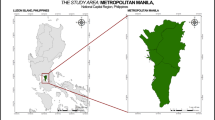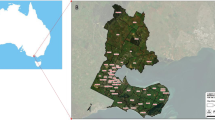Abstract
Virtual 3D city models are digital representation of terrain surfaces, sites, buildings, roads, waterways, etc. In general, these models are used for presenting, exploring and analyzing the urban areas. These models are also used in domains of smart city, virtual reality, infrastructure planning, telecommunication, disaster management, real estate services, education, tourism and change detection. There are various approaches and commercial packages to generate virtual 3D city models. In this novel approach, we have not used any commercial package or tool toward generation and visualization of city model but instead developed in-house routines and used libraries from open source domain to generate and visualize real-time virtual 3D city models. Generation of 3D city models involves the imagery from high-resolution satellite, high-resolution digital elevation model (DEM) and vector shape files from open street maps (OSM) (https://www.geofabrik.de/geofabrik/openstreetmap.html) as inputs. Over and above virtual 3D city models, OSM vector layers of road network, river network and important places have been overlaid for making the virtual city model more informative. Toward realism, virtual trees are placed in the open spaces (as per shape file markings), Sun position and day/night effects, ambient condition effects and building texture, has been incorporated. To achieve generation of city model, we mosaicked preprocessed DEM scenes and images, resampled given datasets using cubic-resampling algorithm, registered the image, DEM and vector layers using phase correlation algorithm, and extracted the height information by processing of DEM and shape files. Vector layers are registered using latitude and longitude and overlaid over the 3D city model for information about the places, roads and water bodies. For efficient visualization and rendering of the model, open scene graph library and tiling-based approach are used in which tiles are replaced in the main memory by its sub-tiles based on viewer’s position. Mentioned approach is applicable to generate and visualize city model of any given area provided the DEM, imagery and OSM data. This paper mainly discusses the approach and advantages of this new cost-effective approach to develop virtual 3D city models using Indian Remote Sensing datasets.







Similar content being viewed by others
Notes
OSM Development Team. https://www.geofabrik.de/geofabrik/openstreetmap.html.
GDAL Merge. www.gdal.org/programs/gdal_merge.html.
References
Ezzeldeen, R. M., Ramadan, H. H., Nazmy, T. M., Adel Yehia, M., & Abdel-Wahab, M. S. (2010). Comparative study for image registration techniques of remote sensing images. The Egyptian Journal of Remote Sensing and Space Sciences, 13, 31–36.
Fraser, C. S., Baltsavias, E., & Gruen, A. (2002). Processing of Ikonos imagery for submetre 3D positioning and building extraction. ISPRS Journal of Photogrammetry and Remote Sensing, 56(2002), 177–194.
Joseph, G. (2005). Fundamentals of remote sensing (2nd ed.). Oxford: Universities Press.
Kocaman, S., Zhang, L., Gruen, A., & Poli, D. (2006). 3D city modeling from high-resolution satellite images.
Livny, Y., Kogan, Z., & El-Sana, J. (2009). Seamless patches for GPU-based terrain renderings. The Visual Computer, 25, 197–208.
Reddy, B. S., & Chatterji, B. N. (1996). An FFT-based technique for translation, rotation, and scale-invariant image registration. IEEE Transactions on Image Processing, 5(8), 1266–1271.
Ritter, N., & Ruth, M. (1995). GeoTIFF format specification, GeoTIFF revision 1.0.
Sharma, S. A., Agrawal, R., & Jayaprasad, P. (2016). Development of ‘3D city models’ using IRS satellite data. Journal of Indian Society of Remote Sensing, 44(2), 187–196.
Singh, S. P., Jain, K., Mandla, V. R. (2013). Virtual 3d city modeling: Techniques and applications. In International archives of the photogrammetry, remote sensing and spatial information sciences, ISPRS 8th 3DGeoInfo conference and WG II/2 workshop, 27–29 November 2013, Istanbul, Turkey 2013 (vol. XL-2/W2).
Wang, R., & Qian, X. (2012). Open scene graph 3 cookbook. Birmingham: Packt Publishing Ltd.
Acknowledgements
The authors express sincere gratitude to Shri. D.K. Das, Director, Space Applications Centre (SAC), for guiding and permitting the presentation of this paper. Authors are thankful to Associate Director Shri Nilesh M Desai, SAC, for encouragement. Authors also acknowledge Group Director, Signal and Image Processing Group (SIPG), for his interest in this activity. Suggestions from internal referees to improve an earlier version of this paper are sincerely acknowledged.
Author information
Authors and Affiliations
Corresponding author
Additional information
Publisher's Note
Springer Nature remains neutral with regard to jurisdictional claims in published maps and institutional affiliations.
About this article
Cite this article
Singla, J.G., Padia, K. A Novel Approach for Generation and Visualization of Virtual 3D City Model Using Open Source Libraries. J Indian Soc Remote Sens 49, 1239–1244 (2021). https://doi.org/10.1007/s12524-020-01191-8
Received:
Accepted:
Published:
Issue Date:
DOI: https://doi.org/10.1007/s12524-020-01191-8




